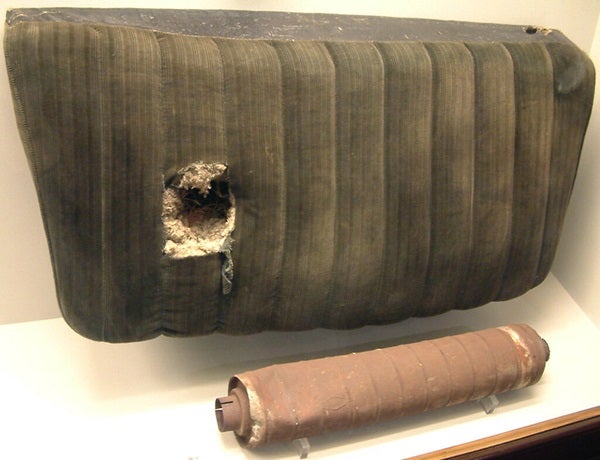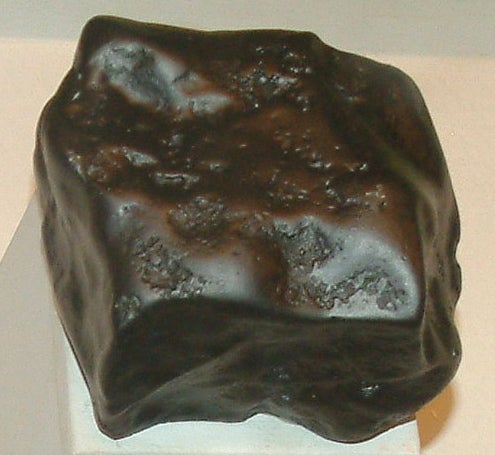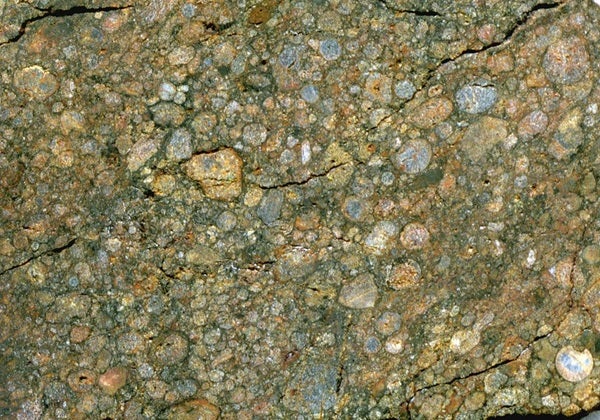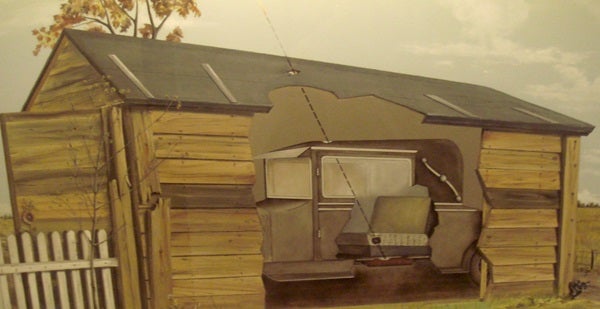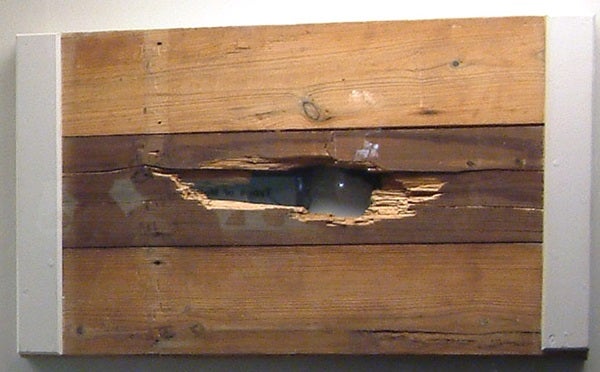That same year, Ben Hur Wilson of the Joliet Astronomical Society poetically reported in Popular Astronomy that “a small stony-iron meteorite came crashing out of the battlements of heaven, aimed apparently with the precision of a crack artilleryman.”
The cosmic cannonball not only tore through the roof, seat, and floor of McCain’s car — which he was fortunately not in at the time — but also rebounded off the Pontiac’s muffler before bouncing back up into the springs of the seat. As you can imagine, McCain was quite astonished to discover the meteorite when he hopped in his car later that same day.
Investigating the fall
Wilson first heard of the event from a radio broadcast two days later. He wanted to investigate — it was only the second recorded meteorite fall in Illinois — but the story seemed incredible, in the truest sense of the word.
Fearing a hoax, Wilson and fellow Astronomical Society member Frank M. Preucil nonetheless sent inquiries to Benld. They received replies from McCain and the principal of the local high school assuring them that the meteorite was genuine.
A few weeks later, Wilson made the 200-mile (322 kilometers) drive to Benld, where McCain showed him the object. A small piece had been broken off to reveal a thin layer of black, fused material coating the outside, a telltale sign of a meteorite. Examining the interior, Wilson noted round inclusions known as chondrules — molten drops of silicate minerals from the early solar system, which remain visible in material that later formed into space rocks.
These numbers were all very well and good, but Wilson was also interested in the circumstances of the fall. There were two witnesses: Mrs. McCain and her neighbor, Mrs. Crum. Although neither woman saw the meteorite land, both reported hearing a sound like an airplane in a power dive shortly after 9:00 A.M. on the day of the fall. They saw no flash or smoke, as might be expected from a glowing hot meteorite. This suggested to Wilson that the meteorite was cool as it fell, a hypothesis borne out by the lack of any scorch marks on the car seat.
What’s more, the Benld meteorite lacks an apex. When a meteor plunges into the atmosphere at high speed, burning away material as it falls, it forms pointed protrusion, or apex, on its forward end. The absence of an apex suggests that the object was not generating intense heat through air friction. It was probably falling at terminal velocity (the maximum speed it could reach) and therefore simply punched a series of holes, rather than demolishing McCain’s garage altogether.
This presented Wilson and Preucil with a unique opportunity: The neat alignment of the holes made it possible to measure the direction of the meteorite’s final path, something that had never before been done. Thanks to the depressions made in the dirt floor by the vehicle’s wheels, it was a simple matter to put the car back exactly where it had been on the day of the fall.
The investigators then used string to create crosshairs at the center of the hole in the roof. They ran another string from it through the roof and seat of the car to the floor of the garage, marking the point with a nail. They then moved the car out of the garage, redrew the string, and fixed a point on it with a simple plumb bob. Using a surveyor’s transit, they aligned the plumb bob with the string crosshairs in the roof to take the first measurement of a meteorite’s trajectory. They found it had come from 64º 46′ east of true north, at an angle of 77º 31′ from the horizontal.
At the time of the fall, that line would extend to the vicinity of Merak (Beta [β] Ursae Majoris) in the Big Dipper. Having made this first-of-its-kind measurement, Wilson remarked on how fortunate it was that the meteorite struck the building squarely. It is not recorded whether McCain agreed.
A singular accomplishment
Today, we know that most meteorites originate in the asteroid belt; but in 1938, their origin was still a mystery. Wilson realized that the line he measured probably did not point exactly to the Benld meteorite’s origin. As the space rock reached terminal velocity in Earth’s atmosphere, its trajectory would have dropped more steeply. Also, since it had no apex, it might have tumbled as it fell, possibly following a disruption in the upper atmosphere. Wilson put out a call to other amateur organizations, seeking additional observations of the fall in hopes of discovering its origin, but without success.
Seventy-five years after the fall at Benld, the Chelyabinsk meteor streaked through the sky over Russia, exploding in a fireball that was recorded by video cameras throughout the region. Astronomers used sophisticated computer calculations to trace the meteor’s origin to the Apollo group in the asteroid belt. The efforts of a pair of amateurs with string and a plumb bob may seem incredibly quaint by comparison, but given the tools of their time, Wilson and Preucil surely made a singular accomplishment.
The Benld meteorite, now displayed at the Field Museum of Natural History in Chicago, has been a favorite with visitors there for decades. It’s a tangible connection between the cosmos and human society, a reminder that we are part of a much larger universe, which, at any time, may tap us on the shoulder (or car) to remind us that it’s there.

